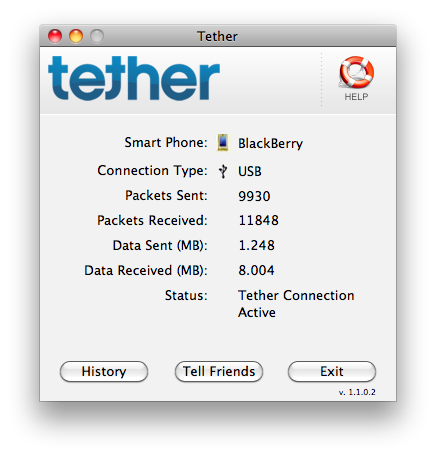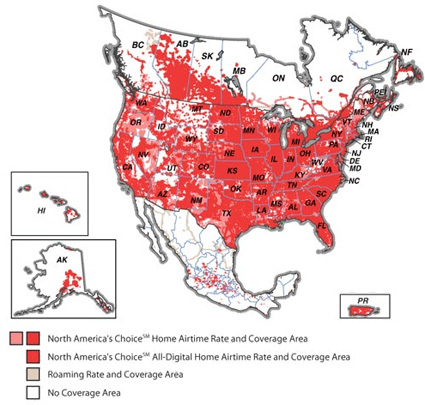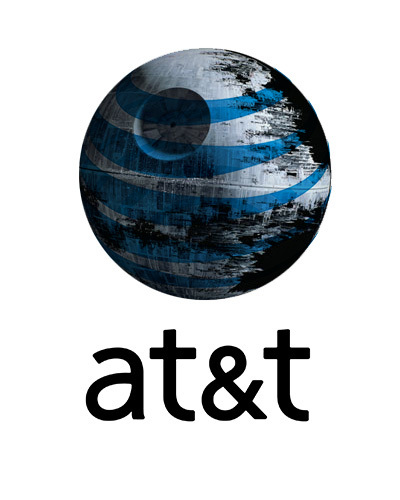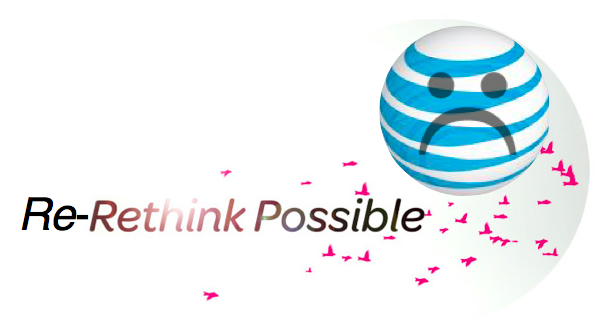Posts tagged Data
Follow Up: AT&T Changes Data Rates
Jun 5th
I’ve been up and down on this whole thing. Worse, I’ve even considered my own usage patterns and how I could possibly save money by switching. In the meantime, I’ve been on the prowl to gather opinions on the situation. Professional opinions from prominent tech blogs and podcasts still see this as a massive atrocity, but do normal people care this much?
As far as I could gauge from the pros, there are two sides to how this will affect customers.
Twitter impressions
But first, how are actual people reacting? I started with the pulse of the world by searching Twitter. Using the phrase “AT&T Data” and then the filters that determine if tweets are positive or negative. My findings? No one is happy. Even the “positive” tweets were sarcastic or half hearted, look-on-the-bright-side messages. There were some legitimate “positive tweets” though. It seemed that plenty of tweets were along the lines of “Most people save money, everyone else gets to keep their current plan, why are people complaining?” Several others were sighs of relief that their network would never do this, blaming iPhone users for this in the first place, and finally, very happy Blackberry users. Really though, you can’t really do anything fun on a Blackberry anyway , so this means nothing (kidding!).
Actually the data is still technically unlimited. It’s your fees that are no longer capped. -@Gartenberg
One particularly damning tweet.
The negative tweets were far more vicious. The word “hate” is prolific. A common retweet concerns iPhone multitasking, video chat, and Skype 3G calls with the new caps. Perhaps just as frequent are posts about user’s intentions to switch to a different carrier or not switching to AT&T. It’s clear, people aren’t happy.
(Don’t use Twitter, but want to understand what the heck I was talking about? Lookup some of the buzzwords using the Twittonary)
Pros
As for the pros, they tend to have a slightly less dramatic opinion, but as I said earlier, they are diverging. First, the bad side. This will drive people to be scared to use to use their phones how they want. Should I stream this radio station? Update this app? Load this webpage? Scared customers are not happy customers, which will ultimately cause backlash. They aren’t totally convinced AT&T will be willing to scale the caps to meet customers’ needs should it not be enough, either.
Oh, tons of flack on the outrageous tethering fee. Paying $20 a month to share 2 GB, to simply unlock the feature. It’s maddening. Finally, tons of worry over the expanding mobile market, just as I feel.
The good side is the potential to sell more phones. AT&T insists that the biggest drawback to smartphones is their cost prohibitive data plans. By lowering prices, they can invite tons of new customers to the bandwagon. They’re also very excited about saving money, since many pros can’t even use more than 2 GB of data a month. This excitement also spreads to the 98% of users that will be saving money too, becoming more enthusiastic about AT&T. Ultimately, they couldn’t say if this is going to help or hurt sales, I can’t either. We’ll have to wait and see.
Me
As for me? I’m actually considering it. Believe it. I almost can’t. Here’s my thinking. I never use WiFi, purely for the sake of using 3G (to stick it to AT&T). I do have it at work, home and friends’ houses, which is where I spend the majority of my time. This would easily cover most of my data usage. My brother is on a family plan with me, and he regularly uses less than 200 MB. Right away, I know we can save $15 on our bill. Deep down, I can’t commit knowing that what I have can never come back. I’d be way more willing if rollover data was implemented like I asked previously. Maybe, all of our bickering can get AT&T to change.
As a final note, this probably the worst for new iPad users (which isn’t the focus on this website). In case you missed it, Gizmodo posted an article about how much video you can watch on 2 GB of data. Don’t let me spoil it for you, but, it’s not much at all.
Editorial: AT&T Changes Data Rates, Good Or Bad
Jun 3rd
Color me surprised. AT&T’s news that data rates will change was completely unexpected, as far as I am concerned. I’ve been ruminating over this all day and thinking about if this is a good thing or not. I’ve got some interesting ideas. To me, it breaks down to value, precedence, and AT&T’s intention. Get your reading glasses, this is a long one.
Value
One of AT&T’s key points here is that most customers will be saving money by getting a package that fits their usage patterns. I question this assumption a little bit. Below is a rough calculation of AT&T’s new plans vs the previous unlimited one. The assumption is that the unlimited was theoretically capped at 5 GB, despite it technically having no limit (just for the sake of argument).
DataPlus Plan 200 MB = $15 = 13 MB / $1 DataPro Plan 2000 MB = $25 = 80 MB / $1 "Unlimited" Plan 5000 MB = $30 = 167 MB / $1
So right up front, it is easy to see that “buying in bulk,” so to speak, represents a fairly good value. Again, technically the Unlimited Plan is more and more of a value the more it’s utilized effectively. However, before people start rioting outside of AT&T’s headquarters, consider AT&T’s explosive secret weapon. 65% of users are covered by the DataPlus Plan, 27% are covered under the DataPro Plan and the remaining 2% actually use more than 2GBs. This means, for all intents and purposes, that these new plans are a tremendous value to 98% of AT&T’s customer base. I’m sure the massive majority of customers will gladly pay $15 less for a plan that fits their usage patterns.
This is actually, extremely exciting for me. One of my biggest gripes with average people using smartphones is how much money they waste on a data plan they aren’t using effectively. AT&T’s new data plans now make it possible for a normal person to have, and use, a smartphone without getting gouged (assuming that customers are aware of these plans and actually switch).
But then there’s that matter of the 2%. Power users? Jailbreakers? Probably both. How are these people affected? In short — they aren’t. Everyone who currently has an unlimited plan is not forced to switch. Upgrading to a new phone will not automatically change it either. The hubbub is over potential - exclusively new customers. This makes me wonder: if someone really needed unlimited data, then it’d be fair to assume that they are enough of a power user to already have a device, right? Even if not, these new customers will have new expectations and usage patterns that will match the new plans. AT&T’s Facebook Fan page has an official comment that sums things up pretty well.
It seems odd that so many current customers are complaining about these new plans. Those customers who have asked us for cheaper data plans are getting their wish, and those who have unlimited plans and want to keep them are being allowed to do so. Our goal is to make mobile Internet available to more people, and I have a good feeling that we’re on the right path.
Then again, this is AT&T beating around the bush, and treating us like children, but more on that in a second. I mean, ultimately, they are doing the right thing by allowing grandfathering for old users with unlimited plans.
A final note is the sheer stupidity of paying an extra $20 a month for tethering on the iPhone when users are limited to 2 GB. It’s $45 for 2 GB to be shared between a computer and the iPhone… absolutely crazy. I guess, right now, my questions are:
- If only 2% were using more than 2 GB, then why bother doing this at all. Wouldn’t you make an exceptional profit on customers that are using less than 200 MB but paying full price?
- If the 2% is really having that much of an effect, why not actually enforce the 5 GB accepted limit to curtail the supposed “damage” they do.
- Why not adjust some of the tiers to still have an unlimited plan. Even if it was $5 extra, thus making it $15/$25/$35 for DataPlus, DataPro and Unlimited respectively. This accommodates everyone.
- If you’re going to give us these limits, why not implement a rollover feature as AT&T does with minutes? I have a feeling this would be looked on very favorably.
- I’d be way more pleased with the DataPlus plan being 350 MB and DataPro being more like 3 GB. Something about that extra cushion makes me feel a bit safer with the decisions. The current scheme seems way too crunched.
- If this is, again, a “2% is killing the network for everyone” issue, then why not freaking IMPROVE YOUR NETWORK!
To wrap up: value. It seems that nearly everyone will save a little bit of money. The 65% lot will save a ton. I still don’t completely understand why AT&T is doing this bait and switch though. What cost will this have for everyone else?
Precedence
My next urgent concern is the precedence this sets for other American carriers and the effect it will have on the future of the mobile space. Now that one carrier has committed the crime, others will definitely follow suit, citing AT&T’s jump as “a new market direction” (or similar bull). This could spell disaster for all consumers on every carrier. Granted, since AT&T took the plunge first, I foresee other carriers having more competitive options: better prices and bigger packages. T-Mobile and Sprint kinda feel like holdouts to me, safe havens for geeks. We’ll see.
To what end though? If Verizon caps internet and has better options, then (for the sake of argument) Sprint comes along and has bigger (or no) caps and even better prices, then won’t the market gravitate towards Sprint? Then decidedly towards an uncapped, unlimited plan? We’ll be back where we started and all of this hassle would have been for nothing. Let’s assume this doesn’t happen though.
From AT&T’s data plan page:
Mobilizing everything – websites, TV shows, music, games, social networks, etc – is the future of the Internet, and it’s made possible by the combination of faster wireless networks, smartphones with computer-like capabilities, and the tens of thousands of innovative mobile apps. Virtually everything previously done while sitting at a computer can now be done while walking down the street, standing in a grocery line, or anywhere else.
They are essentially trying to say “do everything on your phone, but less.” What kind of expectation is that? I mean, it seems like they want to support innovation on their networks, but they are actively preventing it. The effect on the mobile market seems devastating. As the mobile space expands at an alarming rate, we need a big space for innovation to grow. Especially now, when these new devices are increasingly becoming exceptional content consumption devices. AT&T’s caps (and the assumption of other carriers following suit) will stifle the space and render it weak. I’d be terrified if I was a company that delivers mobile content. While just yesterday, your company seemed to be in the right space, and now it’s in jeopardy. Perhaps the thinking is, as mobile expands, maybe AT&T will back down. My thinking is that this will keep the mobile space from expanding in the first place. Hopefully I’ll have egg on my face and eat my words in a few years. I’d like some feedback from content creators on the subject. My hope is some will speak out over the next couple of days.
AT&T’s Intention
AT&T’s intention was not to hurt anyone. I honestly think they have their customers in mind. My problem comes with how they are handling this. Check out what AT&T has on their new data plan info page.
As the U.S. smartphone leader, AT&T has introduced new more affordable data plans so that more people can experience the benefits of the mobile Internet. We’re making it possible to break free from the traditional “one-size-fits-all” pricing model and letting customers choose the data plan that best meets their needs and budget.
It’s carefully crafted to be as fun and unprovoking as possible. It’s almost like AT&T is doing you a favor! Sounds like that friend everyone has. “Yeah, it’d be super cool if you hung out my place! Oh while you’re here, can you try to fix my oven?” At first, it seems like he’s doing your a favor by letting you hang out, but the motive becomes clear quickly. AT&T is also quick to say that “current users are unaffected, stop complaining.” That attitude comes off as horribly snobby. Finally, on AT&T’s Facebook Fan page, they continually mention that “you’ll be able to use AT&T WiFi for free!” as if that’s actually a viable and acceptable solution. AT&T has been harking that crap for years, and it barely makes us blink.
Wrap-Up
The conclusion I fundamentally draw is that this will most likely be beneficial to penny pinching smartphone users, but really really really bad for the market, the future and innovators/mobile developers/content creators. I’m not happy, you probably shouldn’t be either. I have never questioned my iPhone, but today, I actually considered leaving the hundreds of dollars I’ve spent on my iPhone (apps, accessories, etc) and moving elsewhere, even though I’m essentially unaffected (yet). To anyone that knows me, this is simply astounding and unprecedented. If money was no object, I may have done it already out of a knee-jerk reaction.
Who knows, maybe TheCellularGuru will get a new webOS Guru in the future.
BlackBerry App Review: Tether
Jun 1st
 Want to tether your BlackBerry’s data connection to your computer but don’t want to cough up the $30 to your carrier for their tethering fee? If so, stay tuned because an application called Tether may be the solution you have been looking for. I’m going to throw it out there straight-up. Tether isn’t free, it costs $50 but I have seen half-off promotions for it many times and that’s how I snagged my copy. Even for $50, Tether is well worth the money considering that just two months of carrier-regulated tethering will typically cost you $10 more, and you won’t be needing to find overpriced public WiFi anymore.
Want to tether your BlackBerry’s data connection to your computer but don’t want to cough up the $30 to your carrier for their tethering fee? If so, stay tuned because an application called Tether may be the solution you have been looking for. I’m going to throw it out there straight-up. Tether isn’t free, it costs $50 but I have seen half-off promotions for it many times and that’s how I snagged my copy. Even for $50, Tether is well worth the money considering that just two months of carrier-regulated tethering will typically cost you $10 more, and you won’t be needing to find overpriced public WiFi anymore.
In addition to Tether’s fair price point, I think it has a much nicer setup than the carrier’s alternative. In order to use Tether users must install an application on both their BlackBerry and their PC or Mac. Both applications are extremely lightweight and unobtrusive but provide all the functionality that you need to tether and monitor data consumption. PC and Mac files can be found on the web at Tether’s site but they have also intelligently included the ability to download them within the BlackBerry app and store them on the device’s internal or external storage so they can be easily transferred over to your computer.
Tethering with Tether couldn’t be easier. Once applications are installed on both the handset and computer, one needs to simply plug in a USB cable or connect the two via Bluetooth to start tethering. As expected the USB-connected route is the way to go as it charges your device and provides a much faster and more reliable connection between the phone and computer, but it’s nice to have bluetooth as an option when you’re in a bind without a USB cable on you.
By now you’re probably thinking that this sounds too good to be true, that you’re able to Tether without restriction and not fork over cash for a tethering plan. There are of course some caveats to consider before you go too crazy. Depending on your data plan there is a limit of some sort to consider. Obviously if you are on a set-usage plan then plan according to that and base your usage around not exceeding that limit. For those of you on an “unlimited” plan, remember that though the plan may be called unlimited, it typically is capped at 5GB. Granted, 5GB is a ton of data especially with the high data efficiency that RIM has incorporated into the BlackBerry operating system, but still it’s a good idea to keep a tab on how much data you are using while tethering.
When Tether is running it appears as you are just using a butt-ton of data, so don’t be freaked out that carriers will see which application you are using and will come get you for it. So far I have been using Tether pretty heavily for three months and have had no issues with Verizon. Still, I think it warrants a disclaimer that if you’re going to try it you could theoretically get in trouble, but I think it would take some insanely high usage, which on a BlackBerry is hard to accomplish.
Go ahead and give Tether a look here. There is a free trial available which is certainly worth taking for a spin.
Verizon International Data Roaming in Canada: A User’s Guide
May 12th
 The Back-story
The Back-story
For the last two days I have been in Canada for a little sightseeing and a chance to meet GuruDaniel and TheCellularGuru. I’m going to be in Canada for a total of 10 days and could not imagine life in a foreign country without data access on my BlackBerry Tour 9630, however with Verizon’s reputation to hammer its subscribers with high bills and hidden fees, I was afraid I would have to give up data for a few days in favor of forking hundreds of dollars over to Big Red. I automatically did what anyone looking for answers would do: I Googled it. I was brought to Verizon’s website which had some answers but still things were unclear. I found out that I could take the pay-as-you-go option which would charge me $2.06 per MB, or there was from what I understood, an “unlimited international email” package for an extra $35 tacked onto my existing $30 per month data plan. After reading this I went into my local Verizon store and talked to one of the reps there. Basically, the people in the store had absolutely no clue what’s going on. I spent about an hour waiting to talk to someone only to be told that they thought I was correct about using the unlimited international email plan and that it should cover all data use, but they could not turn it on in-store and I would have to call Verizon’s customer service. I also inquired about blocking texting, to which the rep responded that “I could only block it if I blocked each individual number.”
With that information I left, a bit frustrated, mind you, and called customer service as soon as possible. I talked to an extremely informed and polite agent who told me that I didn’t have to fork up a full $35 for data roaming if I was only going to be in Canada for ten days. Instead, I could pay about $2 per day and have unlimited data (with a 5GB cap of course) just as I do in the States, she also told me I could turn off texting for my 10-day stay to avoid the $0.20 per message fee. Any calls made would still cost $0.69 per minute so I’ve been trying to use actual phone function sparingly. I went with what she said and told her to turn on International data roaming for my ten-day stay and to also block texting during that time. I collected her name as well so if anything went awry when I got my bill at the end of the month I could hunt her down.
The Result
Immediately upon crossing the border the triangle roaming indicator popped up on my phone and I was officially using either Bell’s or Telus’ CDMA network. As far as coverage goes, it’s been fairly adequate. I’ve had 3G most of the time on the EVDO network and speeds have been decent. Latency however, has been fairly awful, but CDMA is known for it’s high latency and I have always had similar issues on my Tour even in my home network. Canada’s CDMA carriers also have been pushing users towards their new HSPA and HSPA+ networks so their maintenance attention may not be as focused on their CDMA networks as it once was.
Overall the experience has been acceptable and for just $2 a day for “unlimited” data, I can’t complain too much. Text messaging has been substituted with SMS through Google Voice and I had hoped to use Skype for any calling home I needed to do, but unfortunately it doesn’t work outside the United States. Having data access while traveling has been completely invaluable—allowing navigation, BBM to the Gurus, and messaging to people back home. For now everything seems to be going according to plan, but the bill at the end of the month will be the real tell-all as to whether things went as planned. I’ll update this post with some post-bill results when I get them.
Rogers Unveils New Tethering Policy
Mar 24th
 Since Rogers started their Redboard series of blogs to find ways to better interact with their customers they have been met with a fairly good response. Last we heard, CEO Nadir Mohamed was giving his opinion on the market and not only the direction it’s going in, but also how Rogers plans on following suit. While a lot of customers have been disgruntled with Rogers’ overall lack of aggressiveness it seems as though keeping their ear to the ground has done some good. Remember that ongoing rumor that effective May 5th, 2010 Rogers would start charging for tethering service? (Don’t worry if you don’t understand what tethering means, ill explain at the end of this post) Well, this morning on their Redboard blog Rogers officially put an end to that rumor. They had this to say:
Since Rogers started their Redboard series of blogs to find ways to better interact with their customers they have been met with a fairly good response. Last we heard, CEO Nadir Mohamed was giving his opinion on the market and not only the direction it’s going in, but also how Rogers plans on following suit. While a lot of customers have been disgruntled with Rogers’ overall lack of aggressiveness it seems as though keeping their ear to the ground has done some good. Remember that ongoing rumor that effective May 5th, 2010 Rogers would start charging for tethering service? (Don’t worry if you don’t understand what tethering means, ill explain at the end of this post) Well, this morning on their Redboard blog Rogers officially put an end to that rumor. They had this to say:
Effective immediately, tethering will continue to be included at no additional charge for Rogers and Fido customers who subscribe to data plans of 1 GB and above (excluding those listed below). This effectively makes our current promotion (which was set to expire on May 3) our ongoing policy.
Although not fully there yet, this is a definite step in the right direction for Rogers to win back customer loyalty. The use of wireless data is becoming increasingly popular and granting customers the ability to make more use of what they are already paying for shows a new level of consideration for their clientele. One of the smartest moves Rogers has done in this regard is only allowing free tethering on $30+ data plans (1GB and higher). If you are wondering why this is a good move, the answer is simple. We lose track of time when tethering and frankly 500MB when streaming videos/browsing/downloading is nothing. Putting this cap deters potential costly overages and angry consumer phone calls to an already bogged-down call center. Now, if Rogers would only listen now regarding new more aggressive voice plans I think we’d all feel a bit better.
I’d really like to know what you think about this? Feel free to comment!
To learn more about tethering click More
What is Tethering?
Tethering allows you to connect a computer to the Internet by using a smartphone like a BlackBerry or iPhone. Computers typically use a lot more data when connected to the Internet than smartphones do, so make sure you’re set up with a data plan of 1 GB or above.
Why Tether?
If you’re reading this blog, I probably don’t need to tell you. It’s all about anywhere, anytime communications. There’s no need to find and pay for a Wi-Fi connection – you can browse from the comfort of your laptop, rather than the small screen of your device by tethering.
[Via Rogers Redboard Blog]
Follow me on twitter

















